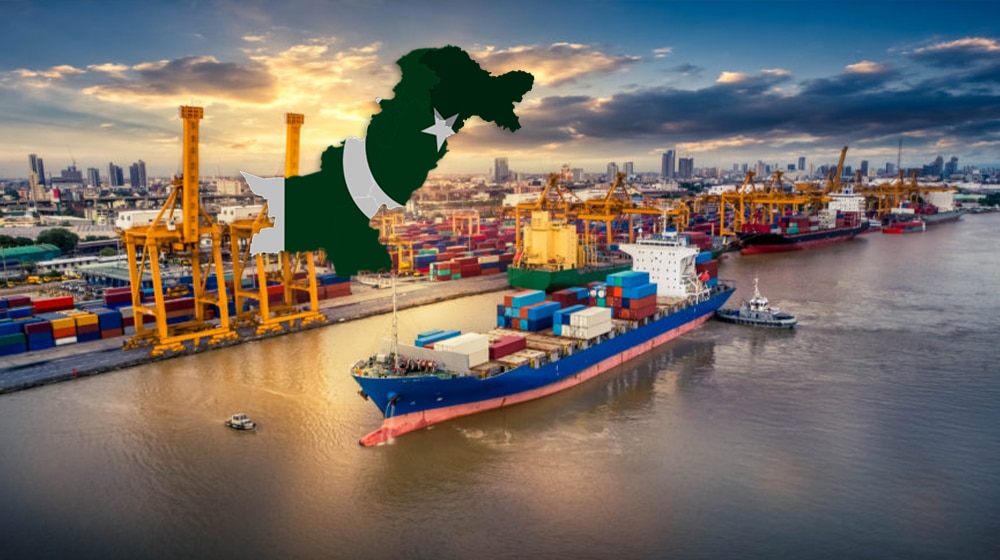The Ministry of Commerce has fixed an export target of $31.20 billion for 2021-22 in the Strategic Trade Policy Framework (STPF) 2020-25.
According to the STPF 2020-25, the ministry has declared an export target of $31.20 billion for 2021-22, $37.88 billion for 2022-23, $45.81 billion for 2023-24, and $57.03 billion for 2024-25.
The government met the $25.30 billion export target during the last fiscal year 2020-21. The ministry has also identified priority sectors that have been bifurcated into traditional and developmental categories. The traditional sectors included Textile and Apparel, Leather, Surgical Instruments, Sports Goods, Carpets, Rice, and Cutlery. The developmental sectors included Engineering Goods (including Auto Parts), Pharmaceutical, Marble and Minerals, Processed Food and Beverages, Footwear, Gems and Jewelry, Chemicals, Meat and Poultry, Fruits and Vegetables, Sea Food, and Services Sector (special focus on IT, Transport, Logistics, Tourism).
The Trade Development Authority of Pakistan (TDAP) will have to devise a comprehensive product export marketing strategy focused on priority sectors and interventions within three months, in addition to the domestic enablers as per the Action Matrices. Pakistan’s Trade Missions abroad will also be energized with realistic and do-able targets to trigger the market and product diversification outreach programs.
The constitution of an Executive Committee for the purpose of driving the implementation of the measures envisaged on a regular basis in the STPF 2020-25 has also been decided. The committee will comprise the Advisor to the Prime Minister or the Minister of Commerce and Investment (Chairman), the Secretary of Commerce, the Secretary of Finance, the Secretary of Industries, the Secretary of the Board of Investment, the Chairman of the Federal Board of Revenue, representatives of the provincial, Gilgit-Baltistan, and Azad Jammu and Kashmir governments Other departments or private sector representatives can be co-opted on a need basis by the committee.
It will submit its reports to the National Export Development Board, and will hold regular meetings to ensure the implementation of the policy measures identified in the STPF. A vibrant Monitoring and Evaluation (M&E) mechanism will be instituted to warrant the successful completion of the initiatives proposed under the STPF 2020-25 besides sustainability.
Similarly, in order to make the M&E mechanism effective and relevant to the changing economic dynamics of the country, there will be a focus on efficiency, employment of a participatory approach to monitoring progress, the utilization of technical and academic expertise, wide dissemination of information, and the usage of input from multiple sources for policy improvement.
Special attention will be given to set program priorities, the development of the program framework, and periodic reviews of the achieved targets. Relevant surveys and reports will be collected and analyzed, and if required, studies will be conducted to gauge the progress made under the STPF.
By reviewing the progress on the outcome under STPF, the two forums such as the National Export Development Board and the Executive Committee will ensure evidence-based decision making, policy formulation and updating, export promotion, improved service delivery, and facilitation for exporters.
Pakistan’s exports have remained stagnant for the last ten years – ranging between $20 billion to $25 billion, thereby reducing Pakistan’s share in the global export market by 10.5 percent.
China and India enhanced their share in global exports by 27 percent and 18 percent respectively during the same period, whereas Bangladesh registered an impressive growth of 95 percent. While Pakistan’s exports have stagnated, imports have kept rising to result in a huge trade deficit. The consequent balance of payments-related crises has made Pakistan’s growth trajectory more cyclical, and remains a threat to the future sustainable economic growth of Pakistan.
In order to address lower exports growth in Pakistan, the Ministry of Commerce has prepared the STPF 2020-25 that aims to enhance the export competitiveness of Pakistan through a framework of interventions that will have an impact across the value chains.
The STPF intends to make the policy implementation unidirectional by correcting the chronic policy fragmentation-related issues that have undermined the effective implementation of previous Trade Policy Frameworks. Overall, it aims to enhance the ability of Pakistani enterprises’ capacity to produce, distribute and sell products and services as or more efficiently than is done by the competitors.





















